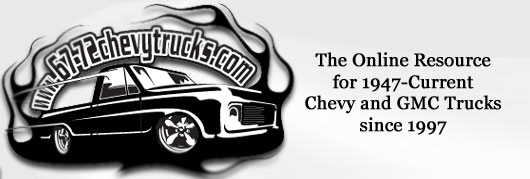
 |
Constant-rate or variable-rate springs?
I'm doing a basically stock fix-up on a '72 C20. Preparing to put some new rear coils in. You can get constant-rate and variable-rate springs.
I understand variable-rates supposedly ride a little smoother, and get progressively stiffer as you load them up. I'm planning to use this truck as a daily driver/work truck. Probably haul some fairly heavy stuff around occasionally, and tow a pretty good-sized car trailer once in a while. Opinions? One better than the other? Experiences? Recommendations? Which would you guys install? |
Re: Constant-rate or variable-rate springs?
. . . and I see BATurbo down below asking more-or-less the same question.
|
Re: Constant-rate or variable-rate springs?
Hearing nothing but the crickets on this one.
I'm going to find a place around here in Detroit to try and get the old springs measured. While I'm there, I'll see if they can tell me what the spring rates should be, or maybe talk them into measuring a new set for me. If I get any info on the differences and recommendations of variable rate and heavy duty springs, I'll drop you a line...:5150: |
Re: Constant-rate or variable-rate springs?
Sounds good.
I was going to give it a few days, bump it once or twice, then go over and ask on the main board. Over on the Moog website they have a short paragraph or two on them. They make an original equipment spring, and the variable rate ones. They call the VRs an "upgrade." Meanwhile, since I posted the question I googled around some more and found this. I think it came out of an automotive technology textbook, and probably answers most of my questions. Quote:
Standard spring-- Wire Diameter:.765" Load Height:8.75" # of Coils:6.1 Design Load:1700 Spring Rate:389 Free Height:13.12" Heavy duty-- Wire Diameter:.906" Load Height:8.75" # of Coils:5.89 Design Load:2900 Spring Rate:718 Free Height:12.54" Standard variable-rate-- Wire Diameter:.812" Load Height:10.75" # of Coils:7.43 Design Load:950 Spring Rate:445 Free Height:13" Heavy duty variable-rate-- Wire Diameter:.937" Load Height:10.75" # of Coils:6.82 Design Load:1335 Spring Rate:820 Free Height:12.38" BATurbo, here's the specs on their available '70 C10 springs (there are only two): Heavy duty-- Wire Diameter:.765" Load Height:8.75" # of Coils:6.1 Design Load:1700 Spring Rate:389 Free Height:13.12" Variable-rate-- Wire Diameter:.812" Load Height:10.75" # of Coils:7.43 Design Load:950 Spring Rate:445 Free Height:13" Looks like the heavy-duty 1/2-ton spring is the same as the standard-duty 3/4-ton spring. The 1/2-ton variable and the standard 3/4-ton variable are also the same. The variable-rate springs all have heavier wire, and a lower design load but higher spring rates, which lends some legitimacy to the statement in the text about comparisons being impossible . . . I guess. :confused: |
Re: Constant-rate or variable-rate springs?
That's good info. Thanks Bret.
I emailed Eaton Detroit Spring and they responded with the stock spring rate of 382 lbs and a free height of 13.19 inches. I'm going to go and talk with them about the advantages/disadvantages of variable rate vs. linear rate springs. See what they tell me. I happen to talk with a coworker who used to work with the Skip Barber racing school and in his opinion, if you're looking for handling, you won't be happy with variable rate springs. I don't know how much "racing" I'll be doing with my truck, but with the freeway speeds around here, a little handling can go a loooong way. :5150: |
| All times are GMT -4. The time now is 12:32 AM. |
Powered by vBulletin® Version 3.8.11
Copyright ©2000 - 2025, vBulletin Solutions Inc.
Copyright 1997-2025 67-72chevytrucks.com